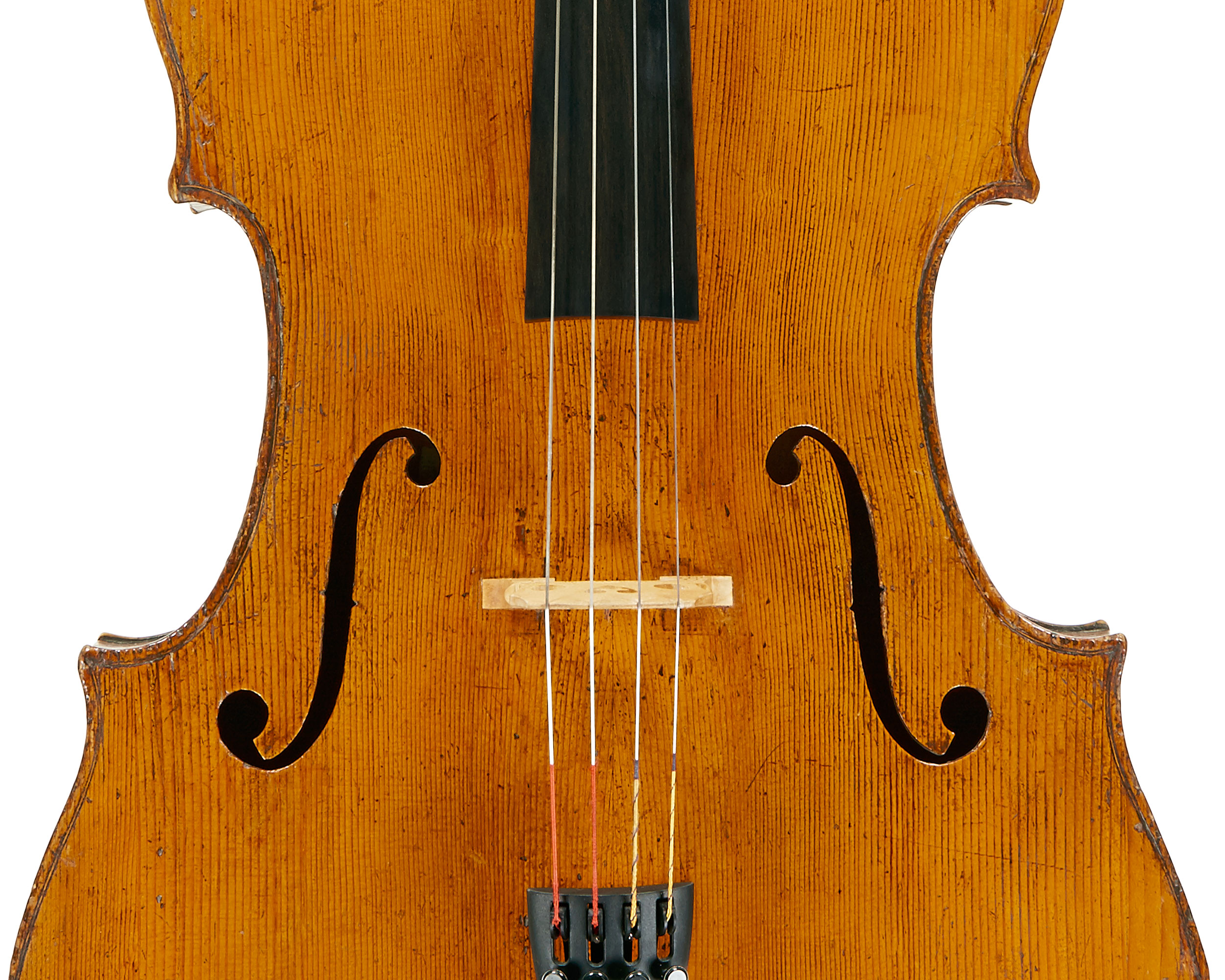The work of Giovanni Grancino (1637–1709) places him among the top makers of Italy at the turn of the 18th century, and yet his accomplishments were made in the face of certain challenges. Grancino worked in Milan, barely beyond the shadow of Cremona’s Torrazzo less than a hundred kilometers away. Cremona’s presence was so close as to be at his doorstep, and it seems that for some time he worked on the same street as an Amati disciple, Bartolomeo Pasta. But while Grancino’s Cremonese contemporaries were busy working in the Amati tradition of classical aesthetics and fine materials, Grancino was left to achieve the same goals with simpler wood that was appropriately affordable to the Milanese clientele.
His achievements despite these challenges are on full display in this 1701 cello. The back, ribs and head are of rather plain maple, and the grain of the spruce top, although excellent for acoustic purposes, is not as straight and fine as the spruce seen in Cremonese instruments of this period. The wide-set soundholes are gently sloped, open through the stem and feature circular eyes of generous proportions. The volute of the scroll is undercut deeply, accentuated by fine chamfers and the flat facet of the ears. The varnish is of a luminous yellow–brown color and is well preserved. The original label appears to read ‘1701’ although the last two digits are somewhat obscured.
This instrument was originally of moderately larger dimensions, as were most cellos of the late 17th and early 18th centuries, and has been reduced slightly in the upper bouts, allowing more comfort for modern players. It shares another feature common to cellos of the 17th and 18th centuries: a plugged minstrel hole in the back, which allowed the cello to hang from a cord around the player’s neck to enable mobility in performance, probably while marching in church processions.
This cello is a fine and characteristic example of Grancino’s work and is illustrated in Four Centuries of Violin Making pp. 278–279.
Tarisio sold this 1701 Giovanni Grancino cello in 2013. Read more about Giovanni Grancino’s life in Carlo Chiesa’s feature about the Grancino family.
